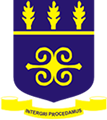Self-Assessment
1. In the past obstetric history, which of the following is very important?
a. The number of deliveries
b. The birth weights of the children
c. The duration of labour
d. All the above
e. None of the above
 A. It is important to know the number of deliveries. Read through the other options to see whether this is the best option.
A. It is important to know the number of deliveries. Read through the other options to see whether this is the best option. B. It is important to know the birth weights of the children. Read through the other options to see whether this is the best option.
B. It is important to know the birth weights of the children. Read through the other options to see whether this is the best option. C. It is important to know the duration of labour. Read through the other options to see whether this is the best option.
C. It is important to know the duration of labour. Read through the other options to see whether this is the best option. D. Correct. This is the most appropriate answer since options a, b and c are all correct.
D. Correct. This is the most appropriate answer since options a, b and c are all correct. E. This is not correct. You need to go over the tutorial.
E. This is not correct. You need to go over the tutorial.2. The age at menarche can be explained as follows
a. The age at which a female gets her sexual debut
b. The age at which a female gets her menstrual debut
c. The age at which a female has her first baby
d. The age at which there is complete cessation of menstruation
e. The duration of the menstrual flow
 A. The age of sexual debut is referred to as coitarche.
A. The age of sexual debut is referred to as coitarche. B. This is the correct definition of menarche.
B. This is the correct definition of menarche. C. There is no special definition for this.
C. There is no special definition for this. D. This is menopause not menarche.
D. This is menopause not menarche. E. This is not correct.
E. This is not correct.3. Examination of the non-pregnant breast may identify the following except:
a. Bloody discharge
b. Milky discharge
c. Fibroadenosis
d. Fibroadenoma
e. Endometriosis
 A. This may be noticed on squeezing the areola.
A. This may be noticed on squeezing the areola. B. This may be noticed on squeezing the areola.
B. This may be noticed on squeezing the areola. C. This can be diagnosed on palpation of the breast.
C. This can be diagnosed on palpation of the breast. D. This can be diagnosed on palpation of the breast.
D. This can be diagnosed on palpation of the breast. E. Correct. Endometriosis cannot be identified on examination of the non-pregnant breast.
E. Correct. Endometriosis cannot be identified on examination of the non-pregnant breast.4. Which of the following can aptly describe this short hand text: K14 C5/30?
a. Menarche was at 30 years and she bleeds for 5 days in every 14 days
b. Menarche was at 14 years. The cycle length is 30 days and the duration of menstruation is 5 days
c. Menarche was at 14 years. The cycle length is 5 days and the duration of menstruation is 30 days
d. Coitarche was at 14 years and coital activity is maintained for 5 days out of every 30 days
e. None of the above
 A. No. This is not the correct explanation.
A. No. This is not the correct explanation. B. This is the correct explanation of the short hand text.
B. This is the correct explanation of the short hand text. C. No. This is not the correct explanation.
C. No. This is not the correct explanation. D. No. This is not the correct explanation.
D. No. This is not the correct explanation. E. No. There is a correct answer in the list.
E. No. There is a correct answer in the list.


